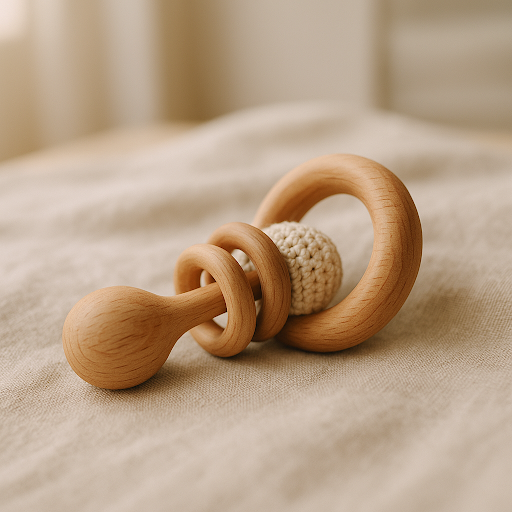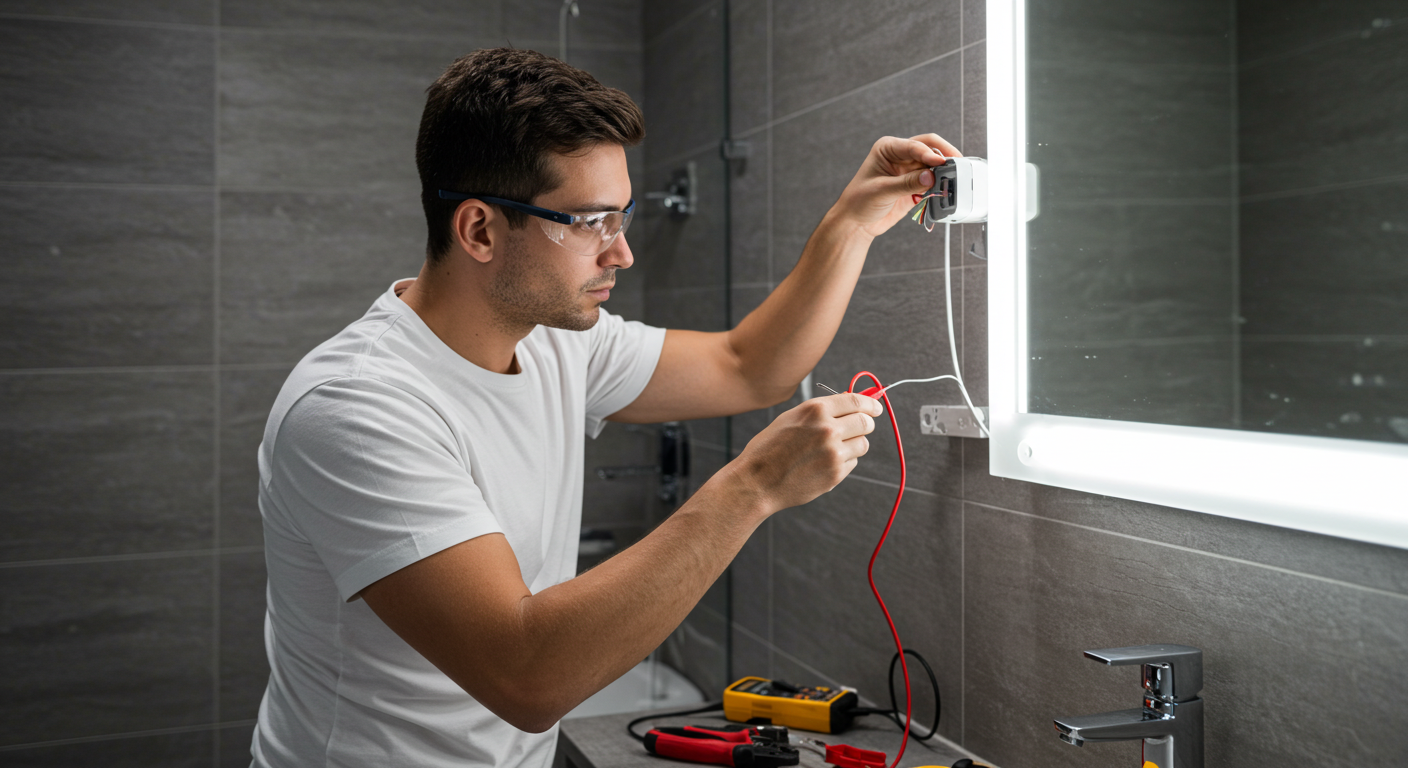Baby rattles are simple toys with a big developmental impact. This article helps Sharjah parents pick safe, natural rattles that support sensory and motor skills while fitting UAE shipping and safety expectations.
TL;DR
Choose wooden or food-grade silicone rattles for safety and sensory value; handcrafted options cost more but last longer; Cuddle Bloom’s Cuddle Twig Rattle ships fast in the UAE and is a good eco-friendly option.
Which materials are safest for a baby rattle?
Wood and food-grade silicone rank highest for safety and sustainability. A baby rattle is a small toy that makes sound when shaken and promotes auditory and motor development.
Wooden rattles use untreated beech or maple and avoid plastics. Silicone rattles use BPA-free, medical-grade material. Avoid painted toys with unknown finishes and small parts that can detach.
Safety tip: Look for non-toxic, CE or ASTM-tested labels and smooth finishes free of splinters. Parents can also check whether brands publish third-party lab results to verify their safety claims. Transparency from manufacturers is a strong sign of trustworthiness.
Wooden vs plastic rattles: safety and developmental benefits
Wooden rattles offer tactile variety and long-term durability compared with many plastic options. Plastic rattles can be colorful and cheaper but may contain unwanted chemicals unless certified.
Wood encourages textured grip and gentle sound differences that support fine motor learning. Plastic provides louder, consistent sounds that may overstimulate some infants.
Quick example: Handcrafted wooden designs often cost about 50% more than mass-produced plastic rattles but get higher marks for longevity and eco credentials. Choosing wood also reduces reliance on disposable plastics, making it a planet-friendly decision.
Parents often find that wooden rattles age gracefully and can even be passed down as keepsakes. Plastic, on the other hand, is more prone to scratches and fading, reducing its lifespan.
How baby rattles support sensory and motor development
Rattles help babies learn cause and effect and strengthen grasping reflexes from day one. Auditory stimulation, combined with reaching and shaking, builds neural pathways for coordination.
Studies link sensory toys to earlier hand-eye coordination and exploratory play. In the UAE market, wooden toy sales rose about 12% annually through 2024, reflecting parent interest in natural options.
Using a rattle during tummy time can also encourage babies to lift their heads and track sounds. These small daily interactions support stronger muscles and more confident movements as they grow.
Caring for baby rattles the right way
To keep your baby’s rattle safe and long-lasting, clean wooden toys gently with a damp cloth and mild soap, avoiding soaking to prevent cracks. Food-grade silicone rattles, on the other hand, can often be sterilized or placed in the dishwasher, making them especially practical for busy parents. With a little care, these rattles stay hygienic, durable, and ready to support a child’s play and learning journey.
At what age should babies start using rattles?
Babies can use rattles from birth when held by an adult and independently around 3–6 months as grasp improves. Parents should always supervise early play sessions, especially when babies are learning to bring toys to their mouths.
Over time, rattles become part of imaginative play as toddlers pretend they are musical instruments or interactive props. This evolution shows how a simple toy can support multiple developmental stages.
For general safety guidance on toys, refer to the American Academy of Pediatrics resource at HealthyChildren.org and the NHS advice on safe toys at NHS.uk.
Care and maintenance for wooden baby rattles
Wipe wooden rattles with a damp cloth and mild soap; avoid soaking. Dry immediately to prevent swelling or cracks.
Lightly rub food-grade mineral oil once every few months to preserve the wood. For a quick disinfect, mix one part white vinegar to four parts water and wipe; rinse with a damp cloth and dry.
Handcrafted vs mass-produced: which should you choose?
Handcrafted rattles offer uniqueness, better materials, and artisan quality. Mass-produced rattles offer variety, low cost, and immediate replacement options.
If you value sustainability and heirloom potential, choose handcrafted. If budget and bright, high-contrast sounds matter, mass-produced items work well.
Buying checklist for Sharjah parents
- Material: beech/ maple wood or food-grade silicone.
- Finish: smooth, non-toxic, no loose parts.
- Size: easy to grasp, no small choking hazards.
- Age label: matches infant development stage.
- Delivery time to Sharjah: 1–3 working days preferred.
- Return policy: at least 14 days for unused items.
How long will a wooden rattle last?
With basic care, a wooden rattle can last years and often becomes a keepsake.
Summary: Choose a baby rattle made from natural, certified materials for safety and developmental value. Handcrafted wooden rattles cost more but offer tactile benefits and sustainability
FAQs
How do I clean a wooden rattle?
Wipe with a damp cloth and mild soap, then dry; avoid soaking to protect the wood.
Are wooden rattles safe for newborns?
Yes, when the finish is non-toxic and the rattle has no small detachable parts.
Can rattles help with teething?
Some rattles double as teething toys if made from solid wood or food-grade silicone and have no soft stuffing.


